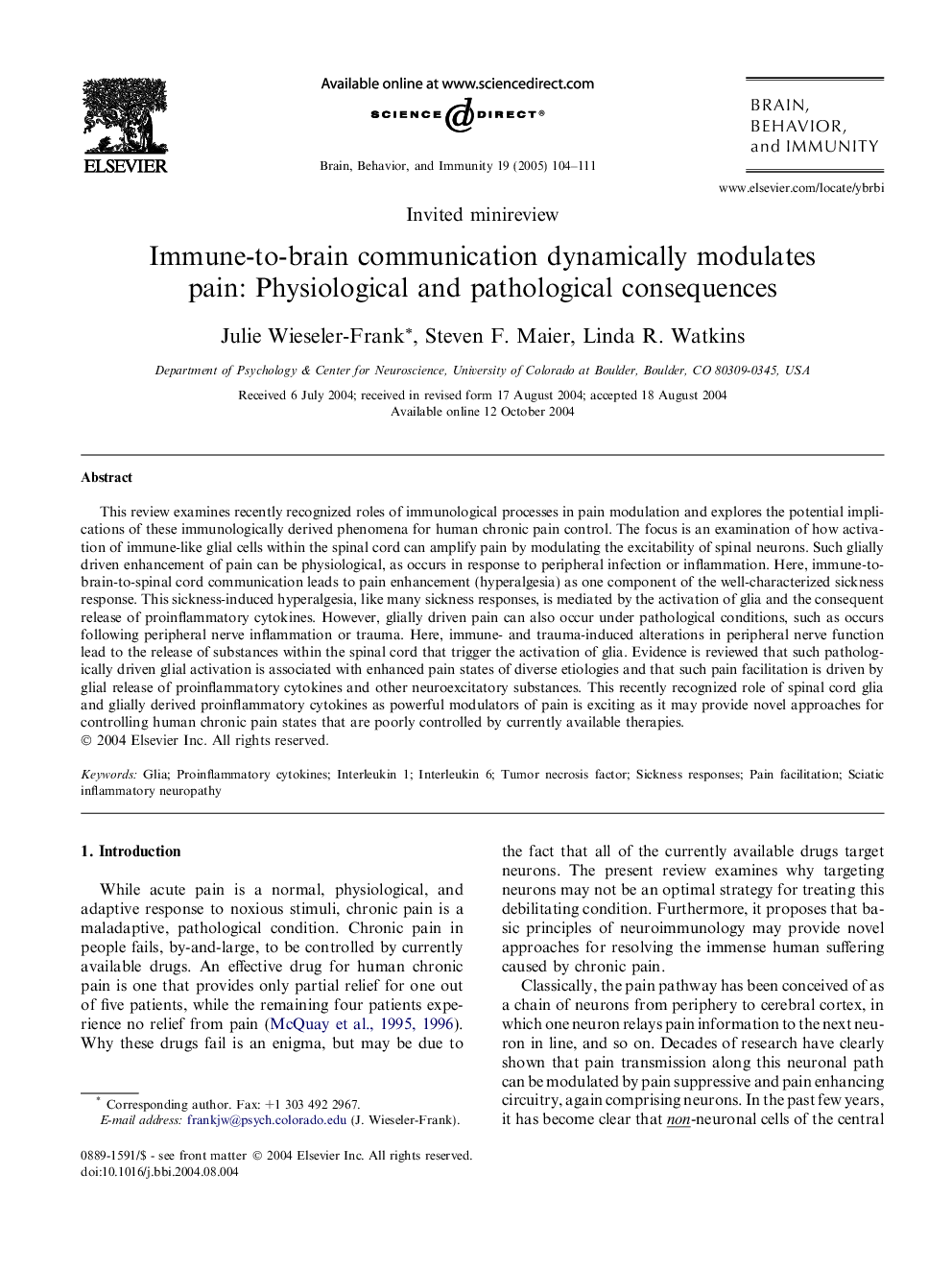| کد مقاله | کد نشریه | سال انتشار | مقاله انگلیسی | نسخه تمام متن |
|---|---|---|---|---|
| 10455268 | 921100 | 2005 | 8 صفحه PDF | دانلود رایگان |
عنوان انگلیسی مقاله ISI
Immune-to-brain communication dynamically modulates pain: Physiological and pathological consequences
دانلود مقاله + سفارش ترجمه
دانلود مقاله ISI انگلیسی
رایگان برای ایرانیان
کلمات کلیدی
موضوعات مرتبط
علوم زیستی و بیوفناوری
ایمنی شناسی و میکروب شناسی
ایمونولوژی
پیش نمایش صفحه اول مقاله

چکیده انگلیسی
This review examines recently recognized roles of immunological processes in pain modulation and explores the potential implications of these immunologically derived phenomena for human chronic pain control. The focus is an examination of how activation of immune-like glial cells within the spinal cord can amplify pain by modulating the excitability of spinal neurons. Such glially driven enhancement of pain can be physiological, as occurs in response to peripheral infection or inflammation. Here, immune-to-brain-to-spinal cord communication leads to pain enhancement (hyperalgesia) as one component of the well-characterized sickness response. This sickness-induced hyperalgesia, like many sickness responses, is mediated by the activation of glia and the consequent release of proinflammatory cytokines. However, glially driven pain can also occur under pathological conditions, such as occurs following peripheral nerve inflammation or trauma. Here, immune- and trauma-induced alterations in peripheral nerve function lead to the release of substances within the spinal cord that trigger the activation of glia. Evidence is reviewed that such pathologically driven glial activation is associated with enhanced pain states of diverse etiologies and that such pain facilitation is driven by glial release of proinflammatory cytokines and other neuroexcitatory substances. This recently recognized role of spinal cord glia and glially derived proinflammatory cytokines as powerful modulators of pain is exciting as it may provide novel approaches for controlling human chronic pain states that are poorly controlled by currently available therapies.
ناشر
Database: Elsevier - ScienceDirect (ساینس دایرکت)
Journal: Brain, Behavior, and Immunity - Volume 19, Issue 2, March 2005, Pages 104-111
Journal: Brain, Behavior, and Immunity - Volume 19, Issue 2, March 2005, Pages 104-111
نویسندگان
Julie Wieseler-Frank, Steven F. Maier, Linda R. Watkins,